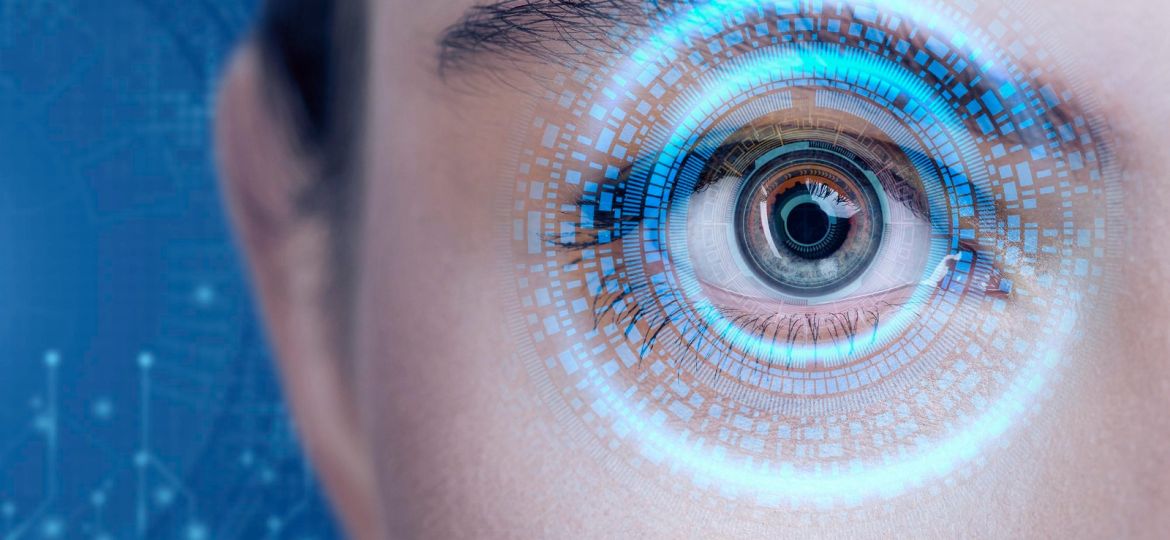
Femtosecond Laser Surgery

Femtosecond lasers stand out as a revolutionary tool, particularly in the field of eye surgery. This blog aims to simplify the intricacies surrounding femtosecond laser technology, exploring its definition, diverse applications in eye surgery, distinct types, popular procedures, compelling benefits, candidacy criteria, potential risks, postoperative care guidelines, technological advancements, and essential tips for choosing a qualified surgeon. Let’s gain deeper insights into femtosecond lasers, bringing to light their precision and revolutionary potential in enhancing eye health.
What is a Femtosecond Laser?
Femtosecond laser eye surgery has revolutionized ophthalmic procedures, offering unprecedented precision and safety. At its core, a femtosecond laser operates with pulses lasting femtoseconds (10-15 seconds). How does it work? Visualize this: The laser emits ultra-short bursts of energy, creating precise incisions or altering tissues at the molecular level. This remarkable precision has found its niche in various ophthalmic procedures, fundamentally transforming the landscape of eye surgery.
Advantages Over Traditional Surgery
The transition from traditional eye surgery to femtosecond laser procedures marks a paradigm shift. These are some of the advantages of femtosecond laser surgery over traditional eye surgery.
- The precision of femtosecond lasers minimizes collateral damage to surrounding tissues, reducing the risk of complications.
- Compared to conventional methods, the femtosecond laser ensures faster healing and recovery, ultimately enhancing patient outcomes.
- The advantages extend beyond safety and precision to include enhanced patient comfort and reduced dependence on corrective lenses post-surgery.
Types of Femtosecond Laser
Understanding the diversity within femtosecond lasers is crucial. There are two primary types: Titanium: sapphire lasers and Erbium-doped fiber lasers. The former operates in the infrared spectrum, ideal for corneal procedures, while the latter, with its higher absorption in water, is often used for femtosecond laser cataract surgery.
Popular Procedures with Femtosecond Laser
Femtosecond lasers have broad applications in eye surgery. Femtosecond laser LASIK (Laser-Assisted In Situ Keratomileusis) stands out, reshaping the cornea with precision. SMILE (Small Incision Lenticule Extraction) offers a minimally invasive alternative, reducing the need for extensive corneal flap creation. Corneal transplants, cataract surgery, and other intricate procedures benefit from the precision afforded by femtosecond laser technology.
Benefits and Advantages of Femtosecond Laser Surgery
The advantages of femtosecond laser surgery are manifold. In a nutshell:
- High precision and safety: Femtosecond lasers ensure unparalleled precision, minimizing the risk of errors and complications.
- Lesser risk of complications: The targeted nature of femtosecond lasers reduces the risk of complications, enhancing overall safety.
- Faster healing and recovery: Patients experience expedited healing and recovery times, contributing to improved postoperative experiences.
Is Femtosecond Laser Eye Surgery Right for You?
Determining candidacy involves a thorough consultation and evaluation process. Factors such as refractive stability, overall eye health, and individual expectations play a crucial role in deciding if femtosecond laser eye surgery is the right choice.
Potential Risks and Complications
It’s necessary to acknowledge potential risks inherent in any medical procedure. These risks may include temporary side effects such as discomfort, dry eyes, glare, or halos. In rare instances, more serious complications like infection or inflammation can occur, although such occurrences are exceedingly uncommon.
To enable you to make informed decisions, engaging in a candid and thorough discussion about these potential risks with a qualified surgeon is essential. A qualified eye surgeon will provide detailed insights into the likelihood of such complications and the measures in place to minimize them. This transparent communication ensures that patients have a comprehensive understanding of the procedure, enabling them to actively participate in their healthcare journey.
Moreover, observing proper postoperative care instructions and attending follow-up appointments play a pivotal role in minimizing and addressing any potential risks, contributing to a smoother and safer recovery process. The collaborative efforts of an informed patient and a skilled surgeon create a foundation for a secure and successful femtosecond laser surgery experience.
Postoperative Care and Recovery Tips After a Femtosecond Laser Eye Surgery
Navigating the postoperative phase after femtosecond laser surgery is a crucial aspect of ensuring a successful and comfortable recovery.
Following the procedure, individuals may experience temporary discomfort, light sensitivity, and mild irritation.
- To facilitate a smooth recovery process, adherence to postoperative care instructions is important. These instructions typically include the regular application of prescribed eye drops to promote healing and reduce the risk of infection.
- It’s imperative to avoid rubbing the eyes and shield them from excessive sunlight or harsh environments in the initial recovery period.
- Consistently taking prescribed medications, attending scheduled follow-up appointments, and promptly communicating any concerns to the medical team are integral to the recovery journey.
- Embracing overall health practices, such as proper hydration and sufficient rest, further contributes to a faster and more comfortable recovery.
By understanding and diligently following these postoperative care guidelines, individuals not only enhance the healing process but also minimize the likelihood of complications, ensuring a confident and worry-free experience as they enjoy the benefits of improved vision.
Latest Technological Advancements
Remaining up-to-date with the latest advancements in femtosecond laser technology is essential for both surgeons and patients. Explore the forefront of emerging trends and innovations that continually shape the landscape of eye surgery, ensuring optimal knowledge and utilization of cutting-edge techniques for enhanced precision and safety in procedures.
Stay informed about breakthroughs, improved laser systems, and advanced imaging technologies that contribute to refining surgical outcomes and delivering the most effective treatments available. This commitment to staying current not only empowers surgeons to provide state-of-the-art care but also allows patients to make well-informed decisions regarding their eye health, emphasizing a collaborative approach to the continual enhancement of femtosecond laser technology.
Finding a Qualified Surgeon
Choosing the right eye surgeon is a crucial step in ensuring a successful femtosecond laser procedure. To guide patients in entrusting their vision to experienced hands, consider several essential tips. Start by thoroughly researching the surgeon’s credentials, ensuring they are board-certified with specialized expertise in femtosecond laser eye surgery.
Reviewing testimonials and patient feedback can provide valuable insights into the surgeon’s track record and overall patient satisfaction. Schedule a consultation to discuss your specific case and inquire about the surgeon’s experience with similar procedures.
Additionally, ask about the technology and facilities used during surgery. Effective communication, a deep understanding of your individual needs, and establishing trust are pivotal factors when selecting a qualified professional for your femtosecond laser eye surgery journey.
Conclusion and Takeaways
Femtosecond lasers have brought in a new era of precision and safety in eye surgery. Whether contemplating LASIK, SMILE, or other intricate procedures, understanding the benefits, risks, and the latest technological advancements allows you to make informed decisions about your eye health. As we navigate the evolving landscape of medical technology, femtosecond lasers stand as a beacon of progress, reshaping the future of eye surgery with precision and innovation.
For those considering undergoing a refractive procedure, consider reaching out to experts at PLANET LASIK Centre For Sight. Our team of experienced surgeons combines skill and cutting-edge technology to provide personalized solutions for your unique needs. Take the first step toward a brighter, clearer future—schedule a consultation with PLANET LASIK Centre For Sight and experience the difference precision can make in your vision. Your journey to optimal eye health begins here.
FAQs
How is femtosecond laser eye surgery different from traditional LASIK?
Femtosecond laser eye surgery differs from traditional LASIK in how it creates the corneal flap. Instead of a blade, it uses advanced laser pulses for better precision. This makes the procedure safer, reduces risks, and speeds up recovery compared to LASIK. Choosing femtosecond laser surgery means opting for a more accurate and efficient vision correction method.
Is femtosecond laser eye surgery painful?
No, femtosecond laser eye surgery is typically not painful. The procedure is performed under local anesthesia, ensuring minimal discomfort for the patient.
How long do the results of femtosecond laser eye surgery last?
The results of femtosecond laser eye surgery are usually permanent. Once the cornea is reshaped, the changes are generally stable, providing long-lasting vision correction.
Will I need glasses or contacts after femtosecond laser eye surgery?
Femtosecond laser eye surgery is designed to minimize or eliminate the reliance on glasses or contacts. While results vary, the goal is long-term visual freedom. Discussing your specific expectations with your surgeon during the consultation will provide a clearer understanding of potential outcomes tailored to your individual needs.
How long does the surgery take?
Femtosecond laser eye surgery is a quick procedure, usually taking around 10 to 15 minutes per eye. The surgery is efficient, allowing for minimal disruption to your daily schedule.
